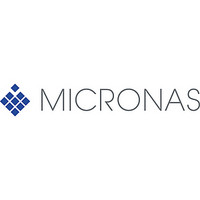MAS3587F Micronas, MAS3587F Datasheet - Page 15

MAS3587F
Manufacturer Part Number
MAS3587F
Description
MPEG Layer 3 Audio Encoder/Decoder
Manufacturer
Micronas
Datasheet
1.MAS3587F.pdf
(83 pages)
Available stocks
Company
Part Number
Manufacturer
Quantity
Price
Company:
Part Number:
MAS3587F-QI-B2
Manufacturer:
INTEL
Quantity:
101
ADVANCE INFORMATION
2.12. MPEG Synchronization Output
The signal at pin SYNC is set to ‘1’ after the internal
decoding for the MPEG header has been finished for
one frame. The rising edge of this signal can be used
as an interrupt input for the controller that triggers the
read out of the control information and ancillary data.
As soon as the MAS 3587F has received the SYNC
reset command (see Section 3.3.1.12. ), the SYNC
signal is cleared. If the controller does not issue a
reset command, the SYNC signal returns to ’0’ as
soon as the decoding of the next MPEG frame is
started. MPEG status and ancillary data become
invalid until the frame is completely decoded and the
signal at pin SYNC rises again. The controller must
have finished reading all MPEG information before it
becomes invalid. The MPEG Layer2/3 frame lengths
are given in Table 2–2.
Fig. 2–10: Schematic timing of the signal at pin SYNC.
The signal is cleared at t
issued a Clear SYNC Signal command (see Section
3.3.1.12. ). If no command is issued, the signal returns
to ’0’ just before the decoding of the next MPEG frame.
Table 2–2: Frame length in MPEG Layer 2/3
Micronas
f
48
44.1
32
24
22.05
16
12
11.025
8
s
V
V
/kHz
h
l
t
frame
Frame Length
Layer 2
24 ms
26.12 ms
36 ms
24 ms
26.12 ms
36 ms
not available
not available
not available
= 24...72 ms
read
when the controller has
t
read
Frame Length
Layer 3
24 ms
26.12 ms
36 ms
24 ms
26.12 ms
36 ms
48 ms
52.24 ms
72 ms
2.13. Default Operation
This sections refers to the standard operation mode
”power-optimized solution” (see Section 2.9.3.).
2.13.1. Stand-by Functions
After applying the battery voltage, the system will
remain stand-by, as long as the DCEN pin level is kept
low. Due to the low stand-by current of CMOS circuits,
the battery may remain connected to DCSOn/VSENSn
at all times.
2.13.2. Power-Up of the DC/DC Converters
The battery voltage must be applied to pin DCSOn via
the 22-µH inductor and, furthermore, to the sense pin
VSENSn via a Schottky diode (see Fig. 2–7 on
page 12).
For start-up, the pin DCEN must be connected via an
external “start” push button to the I2CVDD supply,
which is equivalent to the battery supply voltage
(> 0.9 V) at start-up.
The supply at DCEN must be applied until the DC/DC
converters have started up (signal at pin PUP) and
then removed for normal operation.
As soon as the output voltage at VSENSn reaches the
default voltage monitor reset level of 3.0 V, the respec-
tive internal PUPn bit will be set. When both PUPn bits
are set, the signal at pin PUP will go high and can be
used to start and reset the microcontroller.
Before transmitting any I
must issue a power-on reset to pin POR. The separate
supply pin I2CVDD assures that the I
works indepentently of the DSP or the audio codec.
Now the desired supply voltage can be programmed at
I
The signal at pin PUP will return to low only when both
PUPn flags (I
zero. Care must be taken when changing both DC/DC
output voltages to higher values. In this case, both out-
put voltages are momentarily insufficient to keep the
PUPn flags up; the resulting dip in the signal at the
PUP pin may in turn reset the microcontroller. To avoid
this condition, only one DC/DC output voltage should
be changed at a time. Before modifying the second
voltage, the microcontroller must wait for the PUPn flag
of the first voltage to be set again.
The operating mode (pulse width modulation or pulse
frequency modulation, synchronized rectifier for higher
efficiency) are controlled at I
operating frequency at I
2
C subaddress 76
and Reset
2
C subaddress 76
hex
(see Table 3–3 on page 20).
2
C subaddress 77
2
C commands, the controller
2
C subaddress 76
hex
MAS 3587F
) have returned to
2
hex
C interface
.
hex
, the
15













